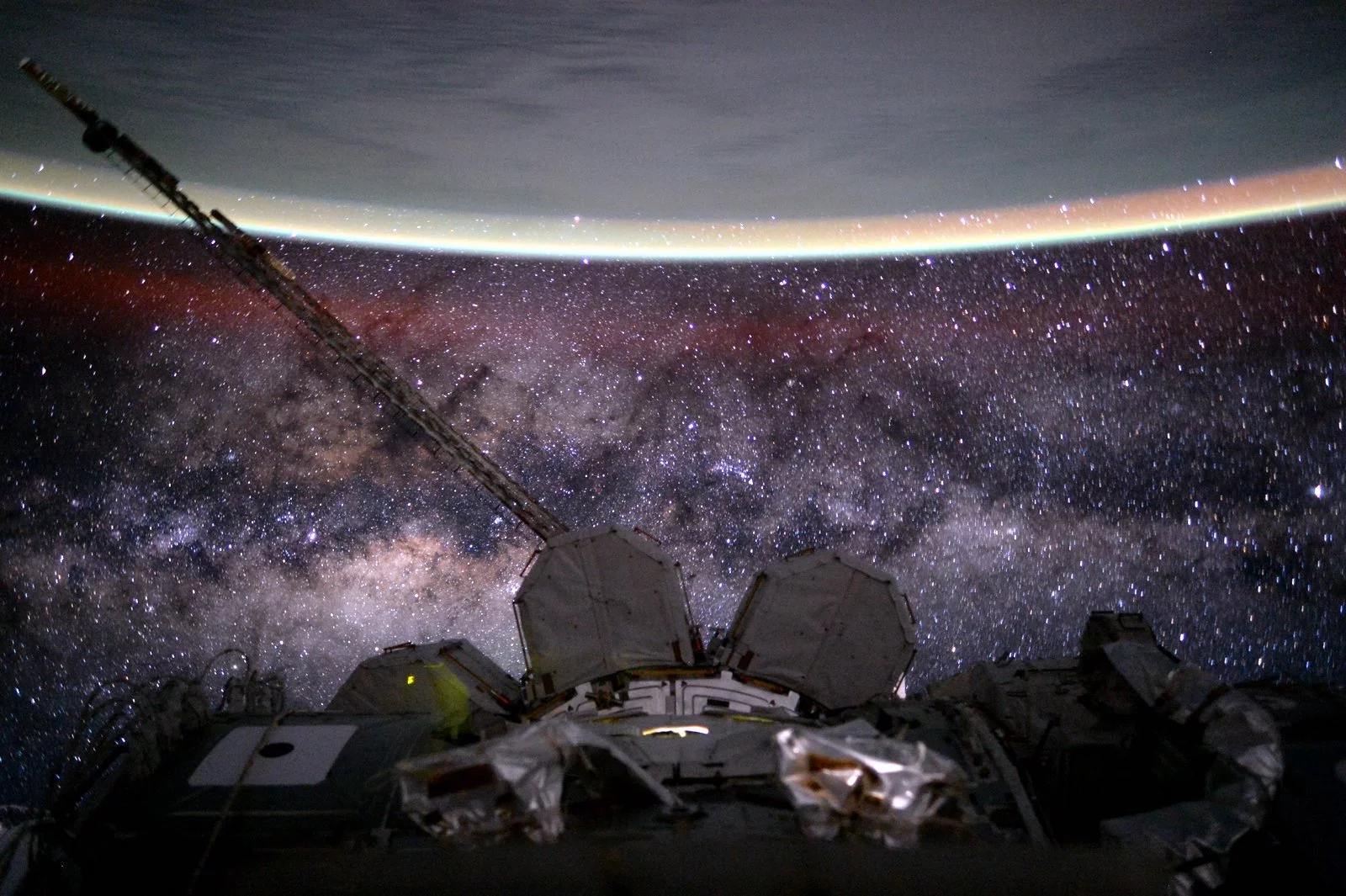Next month, NASA will place a new piece of equipment on the International Space Station (ISS). It will examine a phenomenon known as Earth's airglow for signs of weather-produced waves that can reach the mesopause and disrupt satellite communications.
Known as the Atmospheric Waves Experiment (AWE) mission, the effort from the space agency is the most complete yet to study the way in which atmospheric gravity waves (AGW) reach the outer edges of our atmosphere.
AGWs can be caused by severe weather events in our lower atmosphere such as hurricanes, tornadoes, or strong thunderstorms. When these occur, high-density air can get pushed to extreme altitudes in the atmosphere before sinking back down. The result of this pattern can be distinct cloud formations at the top of the air wave, as seen in the image below.

But more than forming interesting cloud patterns, AWGs can continue traveling upwards, all the way to the mesopause, the coldest layer of our atmosphere, found at an altitude of between 50-56 miles (80-90 km). There, they cause space weather that can potentially disrupt communications from sensitive equipment.
“This is the first time that AGWs, especially the small-scale ones, will be measured globally at the mesopause, the gateway to space,” said Michael Taylor, professor of physics at Utah State University and principal investigator for the mission. “More importantly, this is the first time we will be able to quantify the impacts of AGWs on space weather.”
The AWE was built by Utah State University’s Space Dynamics Laboratory.

To track the AGWs, the AWE will employ four identical telescopes to examine what's known as the Earth's "airglow," a band of light found primarily 31-180 miles (50-300 km) above the Earth's surface. Airglow is caused by the way in which air molecules and atoms selectively absorb X-rays and ultraviolet light from the Sun.
The AWE will track the infrared light in the airglow as the AGWs pass through it at a distance of about 54 miles (87 km) in altitude. By gaining a greater understanding of how they travel and affect space weather, the mission could lead to satellites designed to be immune to their influence.
“AWE will be able to resolve waves at finer horizontal scales than what satellites can usually see at those altitudes, which is part of what makes the mission unique,” said Ruth Lieberman, AWE mission scientist at NASA’s Goddard Space Flight Center in Greenbelt, Maryland.
The AWE mission will be launched on November 6 at 3:01AM GMT.
You can learn more about the experiment on the mission website.
Source: NASA






